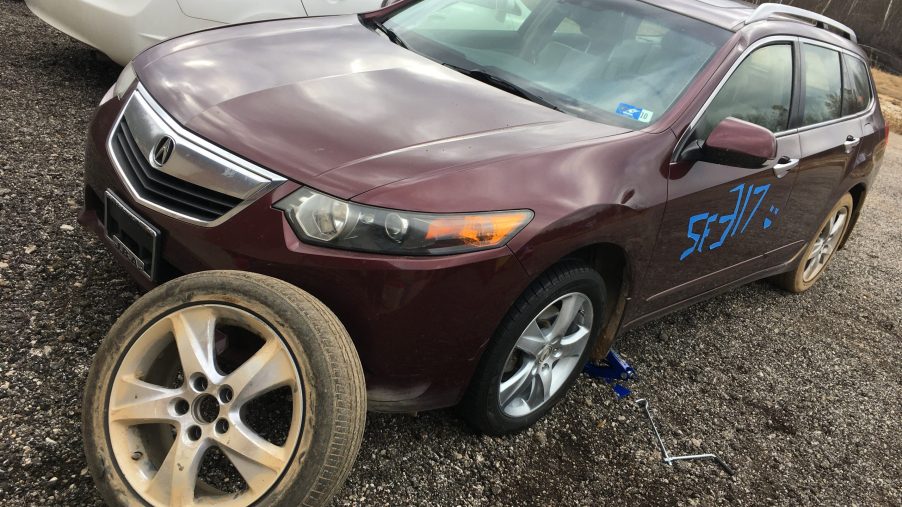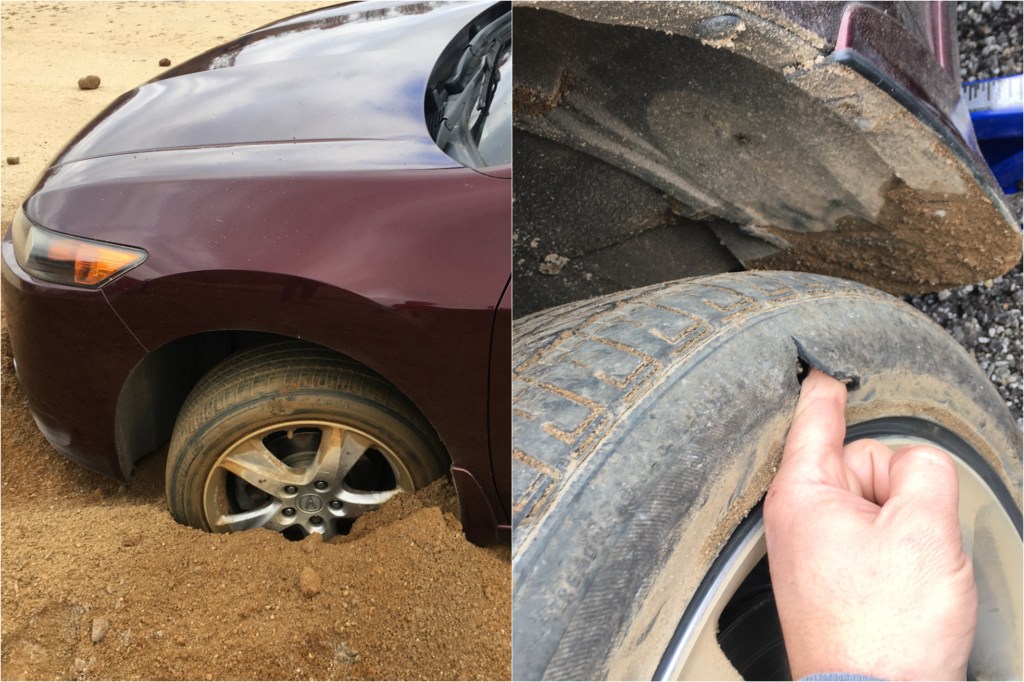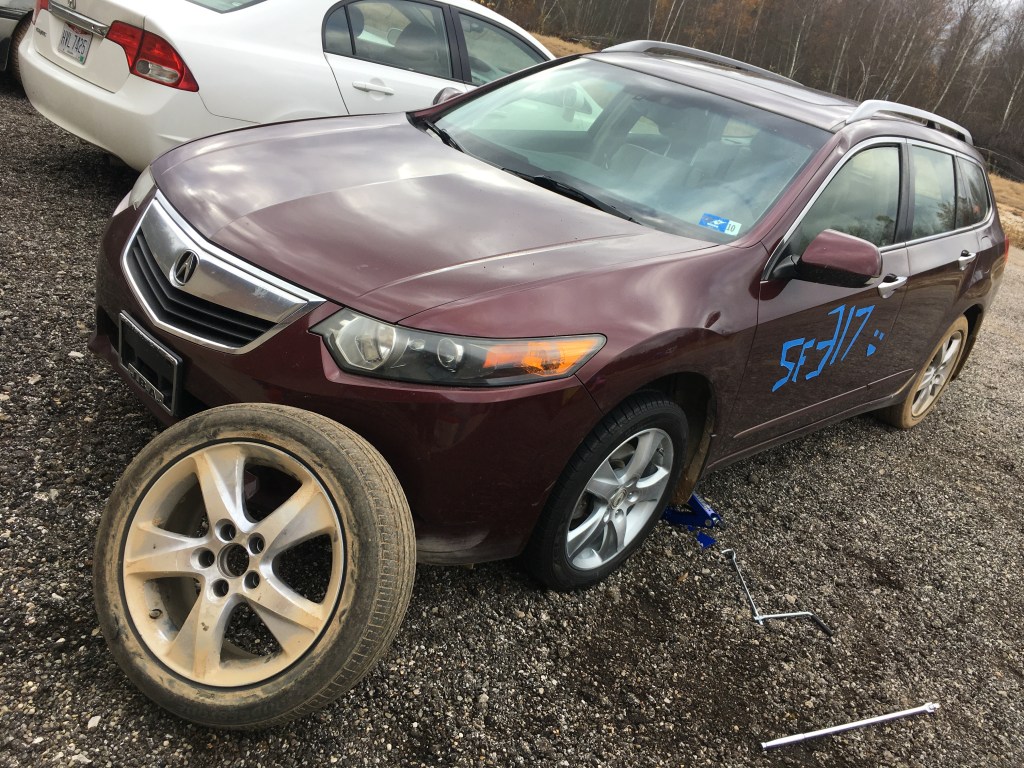
You Need to Go to a Rallycross Event, but Bring a Full-Sized Spare Tire
I recently had the rare opportunity to take my 2012 Acura TSX wagon on a coned off-road course at an SCCA rallycross event. Mind you, this humble little station wagon wasn’t built to go offroad, but I did anyway. And after the experience, I’m 100% hooked. But before you take your car to a rallycross racing event, be sure to have a spare tire.
A brief recap of the sensations you’ll feel at rallycross
Autocross and rallycross are the two cheapest ways to get into performance driving. You can become an SCCA member if you plan on attending these events frequently. But for me personally, I didn’t think I’d be going back often, and paid the $65 flat fee to attend. I had also purchased a $200 SNELL-rated helmet, though if you’re not looking to spend that much, many events have rental helmets available.
The video above doesn’t do rallycross any justice. After all, my 201 hp FWD station wagon was the slowest car of the day by a fairly considerable margin. Even a lowered Toyota Yaris ended up being faster. But the experience inside the cockpit was nothing short of exhilarating.
I’d never done a rallycross event, let alone any sort of racing. If you’re the same way, then you’ll go through a few different “stages” of emotion before hitting the track. Your heart will pound uncontrollably and your breaths will be shaky from an ungodly combination of nerves and excitement. You know you’ll be bad, you may even crash, but you just have to know what it’s like.
And as the event coordinator gives you the green flag, those feelings will slip away as my tires slip trying to find traction. You’ll synchronize with your car, driving it as if you’d stolen it. The runs will be over as soon as they began, but the thrill of driving around a closed course like that, even if it’s at just 15 mph, is unmatchable.
There were times I forgot that the car I’d decided to rallycross was also my daily driver. I flung it around more recklessly than I should have, I’ll admit. And on the last run of the day, that behavior came back to bite me.
If you go to an event, never leave without a full-sized spare tire

I left out a bit of context from my personal experience, but the long and short of it is that I went to a rallycross event 500 miles from home. In other words, I had to be able to get back home, which meant I needed a car in working order. Well, that almost didn’t happen after I pushed it a little too hard.
The last run of the day started, and I wanted it to be my best. Flooring the car and kicking up dust, I yank the wheel around the first corner when, suddenly, other corner workers are flagging me down. Just as I come to a stop, my tire pressure monitoring system alerted me that the driver’s side front tire pressure is low, though that was a slight understatement.
I step out to find my front tire buried in the sand and losing air, with a massive puncture on the sidewall. A truck pulls me out, and I limp my car back to the pits, careful not to damage the rim while I’m driving. Of all the things that could’ve gone wrong that day, I count my lucky stars this was it.
I’m a huge advocate for keeping a full-sized spare tire in your car. And while I didn’t think I was going to use it because I sent my car a bit too hard, it completely saved the trip. Without it, I would’ve been stranded 500 miles from home for a couple of days at least, no thanks to the rubber shortage delaying tire shipments, and a couple of hundred dollars in the hole.
You can (and should) go rallycrossing. Just be prepared for anything

That minor mishap could’ve turned into a major catastrophe, it didn’t. I walked away from the experience with minimal damages and an endless supply of lessons learned. But even still, I want everyone to experience the unforgettable feelings and sensations of rallycross. So here are the big takeaways from my first experience that you should know about.
For starters, bring enough supplies to fix your car if you break it. I had a full-sized spare tire in my trunk, but many of the other participants had a full set, which does cost a lot of money. Luckily for everyone, I was the only one who had to deal with a completely blown-out tire. But it’s still better to have it and not need it than need it and not have it.
But here’s the major lesson I learned after I’d popped my tire: be aware that you might break the car. In fact, you might total it. If you scrape a rock and crack the oil pan, all your engine oil starts leaking. That’s a seized engine, and just like that, the car’s toast. I’m grateful I didn’t have to watch my daily driver get towed to a junkyard, but that very well could’ve happened.
My suggestion is to buy a cheap, reliable beater car and bring it to events. If it breaks, junk it, or try to fix it if you think you’re savvy enough. Yes, you can rallycross your daily driver, but after having done it with my 2012 Acura TSX, I wouldn’t suggest it if you’re faint of heart (like I am) and don’t have a second car.
So spend $65 on the event, $200 for the helmet, and another $700 on a Craigslist car. That poor junker is probably on its last legs anyway, may as well give it a proper send-off. And all that comes in at under $1,000 (not including gas, food, and other expenditures).
It may sound intimidating to go rallycross a car, and believe me it is. But once you get over the fear, rallycross is an unforgettable experience. Beating on a car isn’t something you can do anywhere else. And when it comes out (relatively) unscathed, that’s a total win even if the car finished dead last. Go rallycrossing, but be prepared, that way you won’t regret it.


